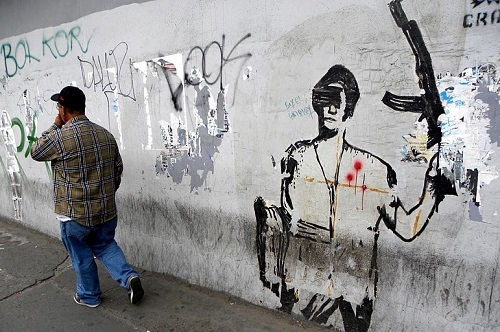Todd Mecklem photo
By
Ricardo Swire
Mexico’s 2017 Interior Ministry report noted that the 29,168 murders were the most recorded since 1997. The country’s internal security battle against traffickers and drug cartels that fragmented to bloodthirsty micro gangs peaked during the 2011 drug wars when 27,213 residents were killed. Rapid and aggressive Jalisco New Generation Cartel (CJNG) expansion prompted chronic drug violence and turf battles.
Ongoing law enforcement offensives are driven by cash donations and technical military support supplied by America via the Merida Initiative. Since 2007 the US donated a minimum US$1.5 billion to the Mexican internal security program, 230,000 individuals killed and more than 28,000 mysteriously disappeared during the period. Despite evidence of serious human rights violations cash continues to flow. US$54 billion was spent by Mexico’s government on security and defence. Evidence indicates several illegal guns involved in Mexico’s drug violence originated next-door.
American internal security analysts use three methods to quantify arms trafficking. “Gun-walking” is the process of authorities purposefully allowing arms dealers to sell guns to straw purchasers and tracing such weapons across the border. The second technique is “assessment of seized weapon stocks.” Third practice is “use of statistical models.” The US Department of Justice’s (DOJ) Bureau of Alcohol, Tobacco, Firearms & Explosives’ (ATF) data specified during the last five years 87% of confiscated guns entered Mexico from the US.
Law enforcement officials in both countries attested most of these weapons equip Drug Trafficking Organizations (DTO). 2017’s GAO report highlighted “the ATF, Department of Homeland Security (DHS), US Immigration and Customs Enforcement do not effectively coordinate efforts.” Such situation stems from absence of clear roles and responsibilities, coupled with outdated inter-agency agreements. According to the report named federal agencies have not systematically collected or analyzed and reported key information that helps plan and assess arms trafficking to Mexico.
US assistance is limited because Mexican counterparts haphazardly use ATF’s eTrace computerized program. Not long ago the US government introduced the “National Southwest Border Counternarcotics Strategy,” managed by the Office of National Drug Control Policy (ONDCP). The strategy has a section specifically related to managing illegal guns smuggled to Mexico. CESOP, or Mexico’s ant-corruption and accountability agency, projected two thousand firearms illegally enter Mexico daily from bordering USA.
In 2012 CESOP calculated illegal guns accounted for 85% of fifteen million firearms which circulated in Mexico. CESOP found 40% of Mexican drug traffickers’ guns originated in Texas, facilitated by “straw purchases.” US DHS data noted in two years, from 2010 to 2012, seizures at the southwest border increased 189% compared to the period 2006 to 2008. A University of San Diego analysis calculated almost half of US firearms dealers are financially dependent on Mexican consumers.
Ricardo Swire
Ricardo Swire is the Principal Consultant at R-L-H Security Consultants & Business Support Services and writes on a number of important issues.



No Comments Yet!
You can be first to comment this post!